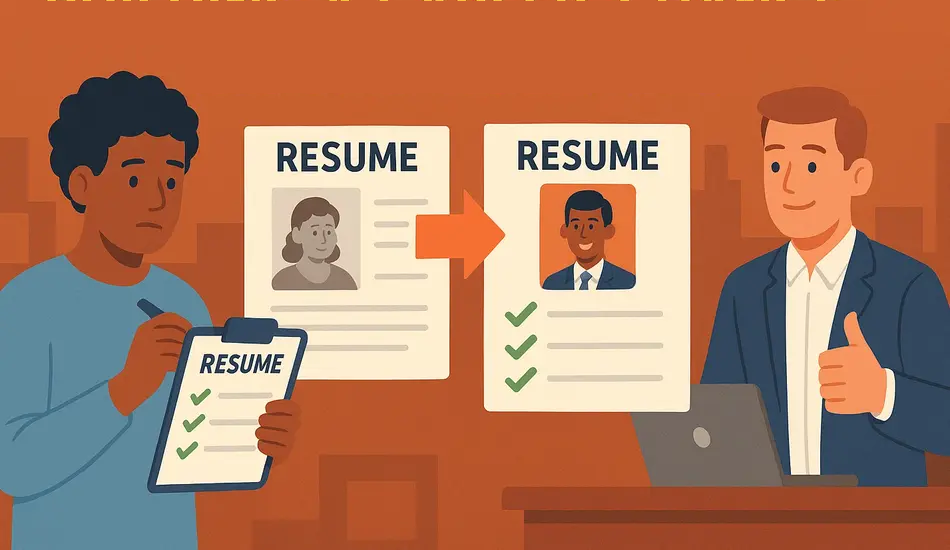Switching careers can feel overwhelming, especially when your resume reads like it belongs to a different world. But here’s the truth: you’re not starting from scratch — you’re repackaging your experience to open new doors.
This guide shows you how to build a career-change resume that pops — grabs attention, tells your story, and gets you hired.
1. Shift Your Mindset: You’re Not Starting From Zero
Before you dive into formatting and buzzwords, pause and reassess what you already have.
You’ve likely developed transferable skills like:
- Leadership
- Problem-solving
- Communication
- Project management
- Customer service
Example:
If you’re moving from teaching to marketing:
“Developed engaging lesson plans for 30+ students” becomes
👉 “Created compelling content to engage a diverse audience — increasing participation by 40%.”
2. Use a Career-Change-Friendly Resume Format
✅ Go Hybrid: Combine a skills-based summary with a reverse-chronological history.
✅ Start With a Summary: Use 2–3 sentences to explain your career pivot and highlight key strengths.
✅ Highlight Core Competencies: Add a skills section above your work history.
Example:
Summary
Former educator transitioning to digital marketing, leveraging 8+ years of experience in content creation, audience engagement, and data-driven instruction. Currently certified in Google Analytics and HubSpot Content Marketing.
3. Tailor Every Resume to the New Industry
Use keywords from job descriptions. If you’re applying for a project coordinator role, emphasize organization, time management, and collaboration — even if those skills came from managing a café or leading a classroom.
Pro Tip: Use a “Skills Translation Table” in your notes (not on the resume).
| Previous Job Skill | Transferable To | New Industry |
|---|---|---|
| Handled customer complaints | Conflict resolution | HR or Account Management |
| Led classroom instruction | Public speaking, communication | Marketing, Training |
4. Showcase Transferable Wins in Work History
Focus on results, not job titles. Highlight achievements using action + skill + outcome.
Example:
Then:
“Taught 3rd grade science.”
Now:
👉 “Developed a science curriculum that improved student test scores by 25%, demonstrating data-driven instruction and content creation.”
5. Add Relevant Projects or Certifications
Your “experience” doesn’t have to be traditional. Include online coursework, freelance work, or volunteer projects relevant to the new role.
Example:
Certifications & Projects
- Google Project Management Certificate – Coursera (2025)
- Managed logistics for a 200-attendee nonprofit event, coordinating teams across 3 departments
- Built a personal website portfolio with SEO optimization
6. Use the Cover Letter to Tell Your Story
Your resume shows what you’ve done. Your cover letter explains why.
Be honest and enthusiastic. Share what drew you to the new field and how your unique background is an asset.
Mini Snippet Example:
“After five years of managing high-pressure restaurant environments, I’ve developed a passion for operational efficiency. I’m now pursuing a career in supply chain coordination, where my ability to lead under pressure, adapt quickly, and communicate clearly can thrive.”
7. Optimize for ATS + Get Real Feedback
Even a great resume can get lost in Applicant Tracking Systems (ATS) if not optimized.
✅ Use tools like Job scan to check keyword match
✅ Keep formatting simple (no columns or images)
✅ Ask mentors or career changers in your target field to review
Final Words: Don’t Undersell Your Story
Career changers are in demand — especially those who can tell a clear, compelling story of why they’re switching and what they bring to the table.
You’re not starting over. You’re starting smart.






